Clearblue Digital Pregnancy Test with Weeks Indicator
£7.99
✓ Easy one-step test – no complicated procedures
✓ Clear digital display shows “Pregnant” or “Not Pregnant” in words
✓ Over 99% accurate from the day your period is due
✓ Tells you how many weeks since conception (1-2, 2-3, or 3+ weeks)
✓ Can be used up to 4 days before your expected period
✓ Brand most recommended by GPs in the UK
✓ Results in just 3 minutes with unique hourglass display
Clearblue Digital Pregnancy Test with Weeks Indicator

Waiting to find out if you’re pregnant can feel like forever. The Clearblue Digital Pregnancy Test with Weeks Indicator gives you not just one answer, but two. It tells you if you’re pregnant, and if you are, it shows you how many weeks have passed since you conceived – all in clear words on an easy-to-read digital display.
This isn’t just any pregnancy test. It’s the only test that combines pregnancy detection with a conception indicator, giving you the reassurance of knowing where you are in your journey. No squinting at faint lines or wondering if you’re reading it correctly – just clear, unmistakable results you can trust.
Why Choose This Test?
When you’re trying to conceive or suspect you might be pregnant, accuracy and clarity matter. This test uses Smart Dual Sensor technology to detect two hormones in your urine, providing both pregnancy confirmation and a weeks estimate. It’s like having two tests in one.
The digital display removes all uncertainty. Instead of deciphering lines or wondering about colour changes, you’ll see clear words: “Pregnant” or “Not Pregnant”. If you are pregnant, it will show “1-2”, “2-3”, or “3+” to indicate the number of weeks since conception.




Understanding Your Weeks Result: The test shows weeks since conception, which is different from how your GP will calculate your pregnancy. Your doctor counts from the first day of your last period, whilst this test counts from conception (which typically happens about 2 weeks after your period). So if the test shows “2-3 weeks”, you’d be around 4-5 weeks pregnant in medical terms.
What’s Included
Each pack contains:
- One Clearblue Digital Pregnancy Test with Weeks Indicator
- Detailed instructions in multiple languages
- Protective cap for hygienic storage
How It Works
When you become pregnant, your body starts producing a hormone called hCG (human Chorionic Gonadotrophin). This hormone is produced by the cells that will eventually form the placenta, and it begins to appear in your urine about 6 to 14 days after conception.
The level of hCG in your body doubles approximately every 2 to 3 days in early pregnancy, reaching its peak around 7 to 12 weeks. It’s this rapid increase that makes early detection possible. The test’s advanced sensor detects even small amounts of hCG, which is why it can give you results up to 4 days before your period is due.
The weeks indicator works by measuring the concentration of hCG in your urine. Different levels correspond to different stages of early pregnancy, allowing the test to estimate how long ago conception occurred.
When to Test
For the most reliable results, test from the day your period is due. However, this test is so sensitive that many women can use it up to 4 days before their expected period. Just remember that testing early means there’s a higher chance of getting a “Not Pregnant” result even if you are pregnant – simply because hCG levels might not be high enough to detect yet.
If you’re testing before your missed period, use first-morning urine when hCG levels are most concentrated. Once your period is due, you can test at any time of day.
Safety Information
- For in vitro diagnostic use only
- Do not use after the expiry date shown on the packaging
- Keep out of reach of children
- Store at room temperature (2-30°C)
- Do not reuse the test stick
- Do not open the foil wrapper until you’re ready to test
- The test is for single use only
Important: This test is designed to detect pregnancy, not to monitor pregnancy health. A positive result means you should book an appointment with your GP or midwife for proper antenatal care. If you have any concerns about your pregnancy, always seek medical advice.
Frequently Asked Questions
How accurate is this test?
The test is over 99% accurate at detecting pregnancy from the day your period is due when used according to the instructions. The weeks indicator is 93% accurate at estimating the time since conception. Laboratory studies show that it’s as reliable as tests performed by healthcare professionals.
Can anything affect my results?
Most medications won’t affect the test, including the contraceptive pill, painkillers like paracetamol, and antibiotics. However, fertility treatments containing hCG can cause false positive results. Drinking alcohol won’t affect the results, but drinking lots of water before testing can dilute your urine and potentially give a false negative if you’re testing early. Certain medical conditions like ovarian cysts, ectopic pregnancy, or recent pregnancy loss can also affect results. If you’re unsure, speak to your GP.
I got a “Not Pregnant” result but my period still hasn’t arrived. What should I do?
You might have miscalculated when your period was due, or you might have tested too early for hCG to be detected. Wait 3 days and test again with a new test using first-morning urine. If you still get a negative result but your period doesn’t start, see your GP. There are various reasons for missed periods other than pregnancy, including stress, illness, or hormonal changes.
Are home pregnancy tests as good as those done by my GP?
Yes! Many GPs and clinics actually use the same type of pregnancy tests you can buy from a pharmacy or online. Both home tests and GP tests work by detecting hCG in your urine. Occasionally, your doctor might order a blood test, but this still looks for the same hormone – it’s just sometimes more sensitive or can give additional information about pregnancy health.
How long will the result stay on the display?
Your result will remain on the display for approximately 24 hours, so you don’t need to worry about reading it immediately. However, the result is most accurate when read within 10 minutes of completing the test. After 24 hours, the display will fade, and the test cannot be reused or reread.
What if I’m unsure about my result?
The digital display is designed to eliminate confusion – it clearly shows “Pregnant” or “Not Pregnant” in words. If the display doesn’t show a result or shows an error, the test may not have been performed correctly. Read the instructions carefully and use a new test. If you’re still unsure or concerned, contact your GP or a healthcare professional for advice.
Related Products
How to Use Your Clearblue Digital Pregnancy Test
Using this test is straightforward, but following the instructions carefully will give you the most accurate results. Take your time and don’t rush – the test will work, and you’ll have your answer in just 3 minutes.
Before You Start
Choose the right time to test: If testing from the day your period is due, you can test at any time of day. If testing early (up to 4 days before your period), use first-morning urine for the most reliable results.
Avoid drinking lots of fluids: Don’t drink excessive amounts of water or other fluids before testing, as this can dilute your urine and affect the accuracy of the test.
Check the expiry date: Make sure your test hasn’t passed its expiry date. Using an expired test may give inaccurate results.
Read the full instructions: Before you start, read through all the instructions in the pack. This ensures you’re familiar with each step and won’t need to rush.
Gather what you need: You’ll need the test stick and either access to a toilet to test directly in your urine stream, or a clean, dry container if you prefer to collect a sample.
Step-by-Step Instructions
1. Remove the test from its wrapper
Open the foil wrapper only when you’re ready to use the test. Take out the test stick and remove the blue cap to reveal the absorbent sampler (the tip).
2. Take your urine sample
You have two options:
- Direct sampling: Hold the absorbent sampler pointing downwards directly in your urine stream for 5 seconds. Make sure the sampler is completely covered by urine.
- Collection method: Collect your urine in a clean, dry container, then dip the absorbent sampler into the urine for 20 seconds only.
Top tip: Don’t wee on the digital display! Keep the display pointing away from your urine stream. Only the absorbent tip should get wet.
3. Wait for the hourglass symbol
After sampling, you may replace the blue cap and lay the test stick flat. Within a few seconds, a flashing hourglass symbol will appear on the display. This means the test is working properly. Keep the stick flat whilst you wait.
4. Wait 3 minutes
Don’t peek too early! It takes 3 minutes for the test to analyse your urine and display your result. The flashing hourglass will disappear once the result is ready.
5. Read your result
After 3 minutes (but within 10 minutes for most accurate reading), check the display. The result will stay visible for up to 24 hours, but it’s best to read it as soon as it appears.
How to Read Your Results
Not Pregnant
If you’re not pregnant, the display will simply show “Not Pregnant”. This means no hCG has been detected in your urine, or the level is too low to indicate pregnancy.
If you tested early and your period still doesn’t arrive, test again in a few days using a new test with first-morning urine. hCG levels might not have been high enough to detect yet.
Pregnant
If you’re pregnant, the display will show “Pregnant” along with a weeks indicator showing how long ago you conceived:
- 1-2 weeks: You conceived 1-2 weeks ago
- 2-3 weeks: You conceived 2-3 weeks ago
- 3+ weeks: You conceived more than 3 weeks ago
Remember: Your GP or midwife will date your pregnancy from the first day of your last period, not from conception. The weeks shown on the test are approximately 2 weeks less than your medical gestational age. For example, if the test shows “2-3 weeks since conception”, you’d be around 4-5 weeks pregnant in medical terms.
Error or No Result
If you see an error message or no result appears, the test may not have been used correctly. Common causes include:
- Not enough urine on the absorbent sampler
- Too much or too little urine applied
- The test stick was not kept flat during the waiting period
- Reading the test too late (after 10 minutes)
If you get an error, you’ll need to use a new test. Follow the instructions carefully, and make sure you apply urine to the absorbent sampler for the full 5 seconds (or 20 seconds if dipping).
Tips for Best Results
- Use first-morning urine if testing early: Your first wee of the day has the highest concentration of hCG
- Don’t dilute your urine: Avoid drinking lots of fluids before testing
- Keep the test at room temperature: Don’t store it in the bathroom where it might get damp
- Don’t reuse the test: Once used, the test cannot provide another result
- Read the result within the time frame: Results are most accurate when read between 3 and 10 minutes
- Use a new test if unsure: If you’re uncertain about your result, take another test in a few days
When to Contact Your GP
Contact your GP or healthcare provider if:
- You get a positive result – you’ll need to arrange antenatal care
- You get repeated negative results but your period still doesn’t arrive
- You have symptoms of pregnancy but keep getting negative results
- You experience pain, bleeding, or unusual symptoms alongside a positive result
- You have any concerns about your result or your health
- You’ve recently had a miscarriage, termination, or given birth (hCG can remain in your system for several weeks)
- You’re taking fertility medications containing hCG
- You’re uncertain about when your period was due and need help calculating your cycle
Seek immediate medical attention if you experience:
- Severe abdominal pain (could indicate ectopic pregnancy)
- Heavy bleeding or passing clots
- Dizziness or fainting
- Shoulder tip pain (this can be a sign of internal bleeding)
Remember, getting a positive pregnancy test is just the first step. Your GP or midwife will provide the medical care and support you need throughout your pregnancy journey.
Pregnancy Testing: Everything You Need to Know
Understanding how pregnancy tests work, when to take them, and what your results mean can help you feel more confident during this important time. We’ve gathered helpful information on common topics related to pregnancy testing.
When Is the Earliest a Pregnancy Test Can Be Taken?
Knowing the optimal time to test can save you money and reduce the disappointment of testing too early. Whilst some tests can detect pregnancy before your missed period, timing matters for accuracy. Learn about hCG levels, when implantation occurs, and why waiting a few extra days can make all the difference in getting a reliable result.
Read more: When Is the Earliest a Pregnancy Test Can Be Taken? →
Understanding hCG Levels in Early Pregnancy
Human Chorionic Gonadotrophin (hCG) is the hormone that pregnancy tests detect. After conception, hCG levels double every 48-72 hours in the first weeks of pregnancy. Understanding how these levels rise – and what’s considered normal – can help you interpret your test results and know what to expect at different stages of early pregnancy.
How to Read Pregnancy Test Results Correctly
Digital tests like this one remove the guesswork by displaying results in words, but it’s still important to understand what you’re seeing and when to read the test. Learn about the difference between evaporation lines and positive results, why timing matters, and what to do if you’re unsure about your result.
Common Early Signs of Pregnancy (Before Your Missed Period)
Some women experience symptoms of pregnancy even before a test can confirm it. From tender breasts and mild cramping to feeling unusually tired or emotional, early pregnancy signs vary from person to person. Discover what might indicate pregnancy and which symptoms are worth paying attention to when you’re trying to conceive.
False Positive Pregnancy Tests: What Causes Them?
Whilst rare, false positive results can occur. Certain medications, medical conditions, and timing issues can all affect test accuracy. Understanding what might cause a false positive – from fertility treatments to chemical pregnancies – can help you know when to retest or seek medical advice.
Article coming soon – learn about false positives and what they mean
What to Do After a Positive Pregnancy Test
Getting a positive result is exciting – and perhaps a bit overwhelming! From booking your first appointment with your GP or midwife to starting prenatal vitamins and making lifestyle changes, there’s a lot to think about. Find out the essential first steps to take when you discover you’re pregnant.
Article coming soon – your complete guide to the next steps
Understanding the Weeks Indicator on Pregnancy Tests
The conception indicator is a unique feature that shows how many weeks have passed since conception occurred. But what do these numbers really mean, and how do they relate to your actual pregnancy dating? Learn how to interpret the weeks indicator and why it differs from the gestational age your midwife will use.
Article coming soon – decode your conception indicator results
How Accurate Are Home Pregnancy Tests?
Modern pregnancy tests are highly reliable when used correctly, but accuracy depends on several factors including when you test, how you use the test, and individual hormone levels. Explore the science behind test accuracy, understand what “99% accurate” really means, and learn how to maximise the reliability of your results.
Article coming soon – the facts about pregnancy test accuracy
More Articles About Pregnancy and Fertility
Need personalised advice? Whilst this information is designed to be helpful, it’s not a substitute for professional medical advice. If you have specific concerns about pregnancy testing, conception, or your reproductive health, please speak to your GP or a qualified healthcare professional.

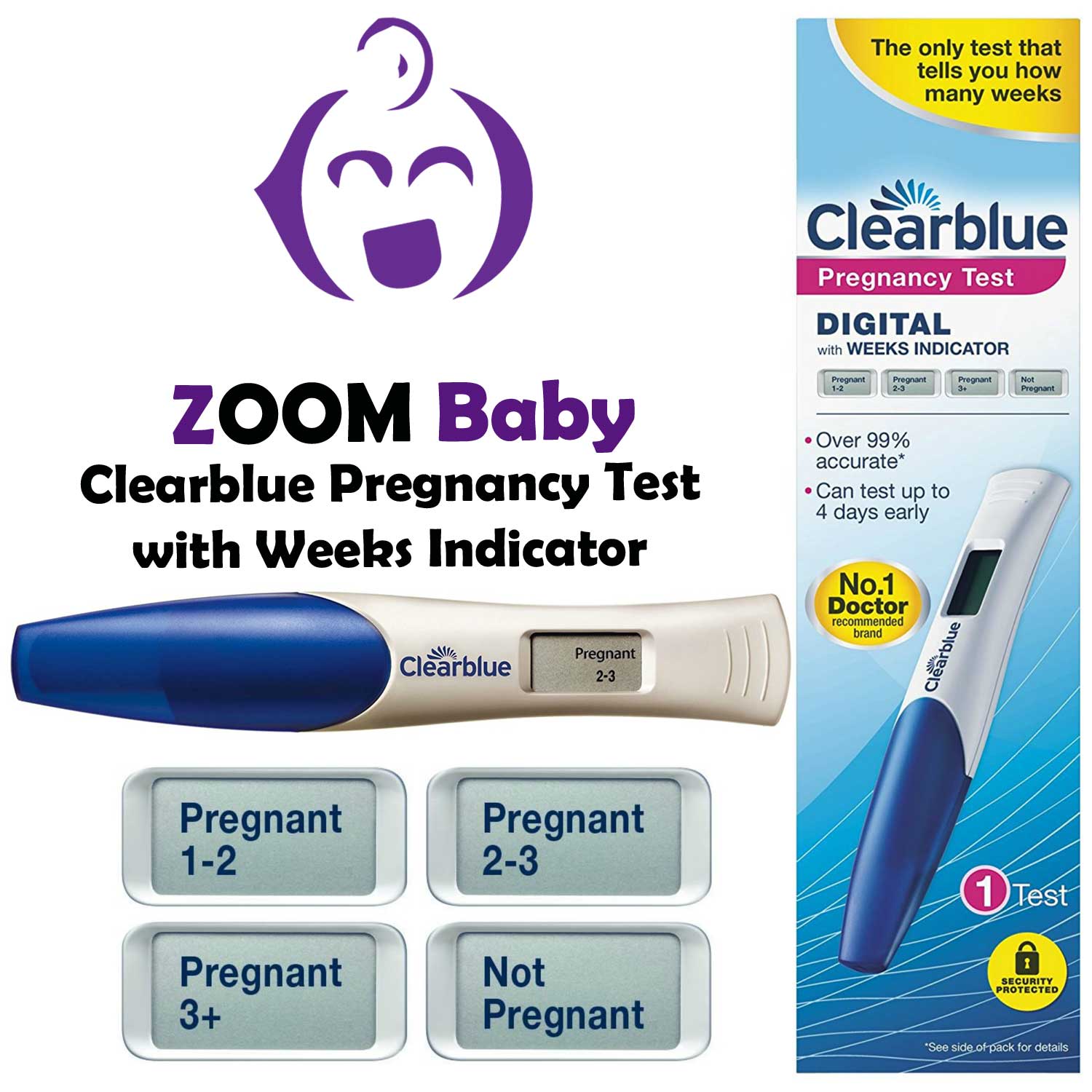
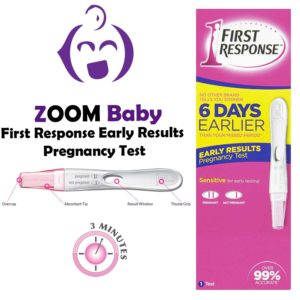
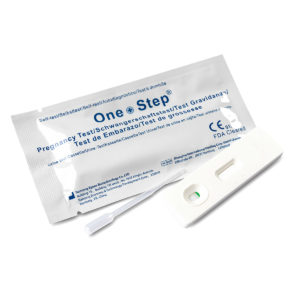
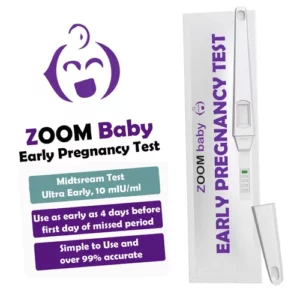
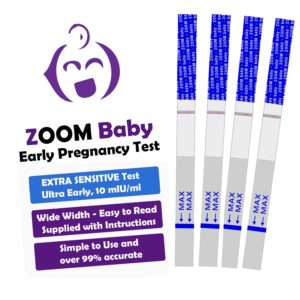

Reviews
There are no reviews yet